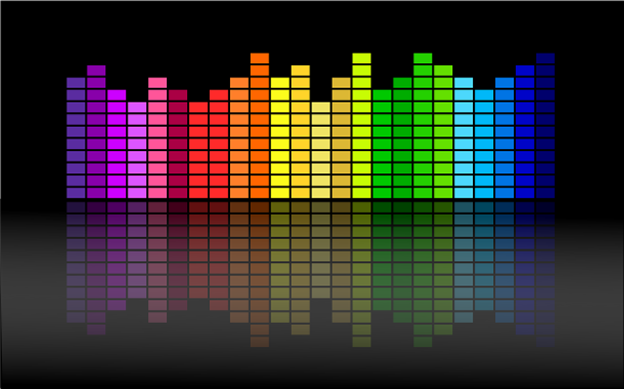Healthy Nurse, Healthy Nation® Blog - What’s the Best “Noise Color” for Quality Sleep?
Published
How different sleep sounds can promote better rest
Quality sleep is essential to emotional, mental, and physical wellness. It elevates mood, improves memory and attention, and keeps the immune system strong.
Yet, for many people, achieving that restful slumber on a regular basis can be a challenge. Common issues like insomnia and nighttime disruptions interfere with sleep, impacting mental and physical health.
As it turns out, there may be a simple solution to falling (and staying) asleep every night: noise.
Health Consequences of Insufficient Sleep
According to the Centers for Disease Control and Prevention, more than 30% of adults get less than 7 hours of sleep each night.
Insufficient sleep has both short- and long-term effects on wellness. Driving while tired increases your risk of an accident and injury. Fatigue can make you feel irritable and decrease your performance at work.
Over time, a lack of quality sleep may contribute to health conditions including:
Although it seems counterintuitive, adding the right background noise to your environment can boost the quality and length of our sleep. The key is finding a noise “color” that keeps your brain and body relaxed.
What Are Noise Colors?
According to SleepFoundation.org, "white" noise isn’t the only hue of sound that can help you get some zzz’s. Noise colors are categories of ambient (background) sounds.
Colored noise is neutral and steady, unlike loud or unexpected sounds that wake you up (like a fire alarm or barking dog). For people living in noisy environments, it may mask sounds that interrupt sleep.
The most common noise colors for sleep include:
Each color contains every frequency of sound that your ears can hear, but the power (volume) of the frequencies differs. And they each have different benefits as well.
White Noise
White noise includes all sounds a human can hear at equal volumes. It produces a steady humming or whirring sound.
Sources of white noise include:
Research shows that white noise can significantly improve sleep for people who live in noisy environments like urban neighborhoods.
The idea of using noise color to improve sleep isn’t new. Seventeenth-century architect and sculptor Gian Lorenzo Bernini invented a machine to treat insomnia that employed white noise.
In addition to boosting sleep, white noise has been shown to:
Pink Noise
Pink noise encompasses sounds that decrease in volume as they increase in pitch. To the human ear, pink noise has a lower pitch than white noise.
Many relaxing sounds from nature fall into the pink noise category. These include:
Researchers found that pink noise helps people fall asleep faster and prolongs cycles of deep sleep.
Studies also found that pink noise can improve recall in older adults after sleep and reduce signs of pain in rodents.
Smartphone apps, YouTube videos, and noise machines offer a variety of pink noise sounds to promote relaxation and faster, deeper sleep.
Brown Noise
Humans hear the sounds of brown noise (sometimes called red noise) in lower frequencies than white or pink noise. With brown noise, the volume of sounds at higher frequencies decreases faster than pink noise. This results in a calm, deep sound, like a rumble or distant roar.
Sounds that fall within the brown category include:
While less research exists on the benefits of brown noise for sleep (vs. white or pink), some people report it is more relaxing than white noise.
Studies have shown that brown noise may improve:
Researchers have also examined ways brown noise may improve tinnitus (ringing in the ears).
Like pink noise, brown noise sounds are available via smartphone apps, YouTube, and sound machines.
How to Choose the Right Noise Color for Sleep
Research has not found that a particular noise color is “best” for helping you sleep. Some people prefer white noise, while others find the lower-pitched sounds of nature more relaxing.
If interested, try each type of noise for a night or 2 and see which works for you. Avoid high volumes, which can disrupt sleep. Research suggests that noise played at 46 decibels (the volume of a running refrigerator) helps you fall (and stay) asleep.
Good Sleep Hygiene
Although soothing background noise can help with a healthy sleep environment, there are other things you can do as well. According to the American Academy of Sleep Medicine, sleep hygiene can be improved by:
If these habits don’t improve your sleep, talk to your health care provider. They can help determine the root cause of sleep issues and offer treatment if necessary.
Have you ever tried noise colors to induce a good night’s sleep? Share with us in the discussion below.

Not a member of Healthy Nurse, Healthy Nation (HNHN) yet? Join today!
Sign up for our monthly challenges!
Yet, for many people, achieving that restful slumber on a regular basis can be a challenge. Common issues like insomnia and nighttime disruptions interfere with sleep, impacting mental and physical health.
As it turns out, there may be a simple solution to falling (and staying) asleep every night: noise.
Health Consequences of Insufficient Sleep
According to the Centers for Disease Control and Prevention, more than 30% of adults get less than 7 hours of sleep each night.
Insufficient sleep has both short- and long-term effects on wellness. Driving while tired increases your risk of an accident and injury. Fatigue can make you feel irritable and decrease your performance at work.
Over time, a lack of quality sleep may contribute to health conditions including:
- Heart disease
- High blood pressure
- Stroke
- Type 2 diabetes
- Weight gain
Although it seems counterintuitive, adding the right background noise to your environment can boost the quality and length of our sleep. The key is finding a noise “color” that keeps your brain and body relaxed.
What Are Noise Colors?
According to SleepFoundation.org, "white" noise isn’t the only hue of sound that can help you get some zzz’s. Noise colors are categories of ambient (background) sounds.
Colored noise is neutral and steady, unlike loud or unexpected sounds that wake you up (like a fire alarm or barking dog). For people living in noisy environments, it may mask sounds that interrupt sleep.
The most common noise colors for sleep include:
- White noise
- Pink noise
- Brown noise
Each color contains every frequency of sound that your ears can hear, but the power (volume) of the frequencies differs. And they each have different benefits as well.
White Noise
White noise includes all sounds a human can hear at equal volumes. It produces a steady humming or whirring sound.
Sources of white noise include:
- Air conditioners
- Fans
- Noise machines
- Vacuum cleaners
Research shows that white noise can significantly improve sleep for people who live in noisy environments like urban neighborhoods.
The idea of using noise color to improve sleep isn’t new. Seventeenth-century architect and sculptor Gian Lorenzo Bernini invented a machine to treat insomnia that employed white noise.
In addition to boosting sleep, white noise has been shown to:
Pink Noise
Pink noise encompasses sounds that decrease in volume as they increase in pitch. To the human ear, pink noise has a lower pitch than white noise.
Many relaxing sounds from nature fall into the pink noise category. These include:
- Flowing water (like a creek or river)
- Rain
- Soft ocean waves
- Waterfall
- Wind
Researchers found that pink noise helps people fall asleep faster and prolongs cycles of deep sleep.
Studies also found that pink noise can improve recall in older adults after sleep and reduce signs of pain in rodents.
Smartphone apps, YouTube videos, and noise machines offer a variety of pink noise sounds to promote relaxation and faster, deeper sleep.
Brown Noise
Humans hear the sounds of brown noise (sometimes called red noise) in lower frequencies than white or pink noise. With brown noise, the volume of sounds at higher frequencies decreases faster than pink noise. This results in a calm, deep sound, like a rumble or distant roar.
Sounds that fall within the brown category include:
- Crashing waves
- Distant thunder
- Pouring rain
- Rushing water
While less research exists on the benefits of brown noise for sleep (vs. white or pink), some people report it is more relaxing than white noise.
Studies have shown that brown noise may improve:
- Executive function in the brain
- Memory
- Work efficiency
Researchers have also examined ways brown noise may improve tinnitus (ringing in the ears).
Like pink noise, brown noise sounds are available via smartphone apps, YouTube, and sound machines.
How to Choose the Right Noise Color for Sleep
Research has not found that a particular noise color is “best” for helping you sleep. Some people prefer white noise, while others find the lower-pitched sounds of nature more relaxing.
If interested, try each type of noise for a night or 2 and see which works for you. Avoid high volumes, which can disrupt sleep. Research suggests that noise played at 46 decibels (the volume of a running refrigerator) helps you fall (and stay) asleep.
Good Sleep Hygiene
Although soothing background noise can help with a healthy sleep environment, there are other things you can do as well. According to the American Academy of Sleep Medicine, sleep hygiene can be improved by:
- Avoiding food and drinks before bed
- Creating a soothing bedtime routine
- Establishing a sleep-inducing environment
- Keeping a consistent sleep schedule
If these habits don’t improve your sleep, talk to your health care provider. They can help determine the root cause of sleep issues and offer treatment if necessary.
Have you ever tried noise colors to induce a good night’s sleep? Share with us in the discussion below.

Not a member of Healthy Nurse, Healthy Nation (HNHN) yet? Join today!
Sign up for our monthly challenges!
Blog Rest
09/05/2024 4:24pm CDT



Post a Comment or Question